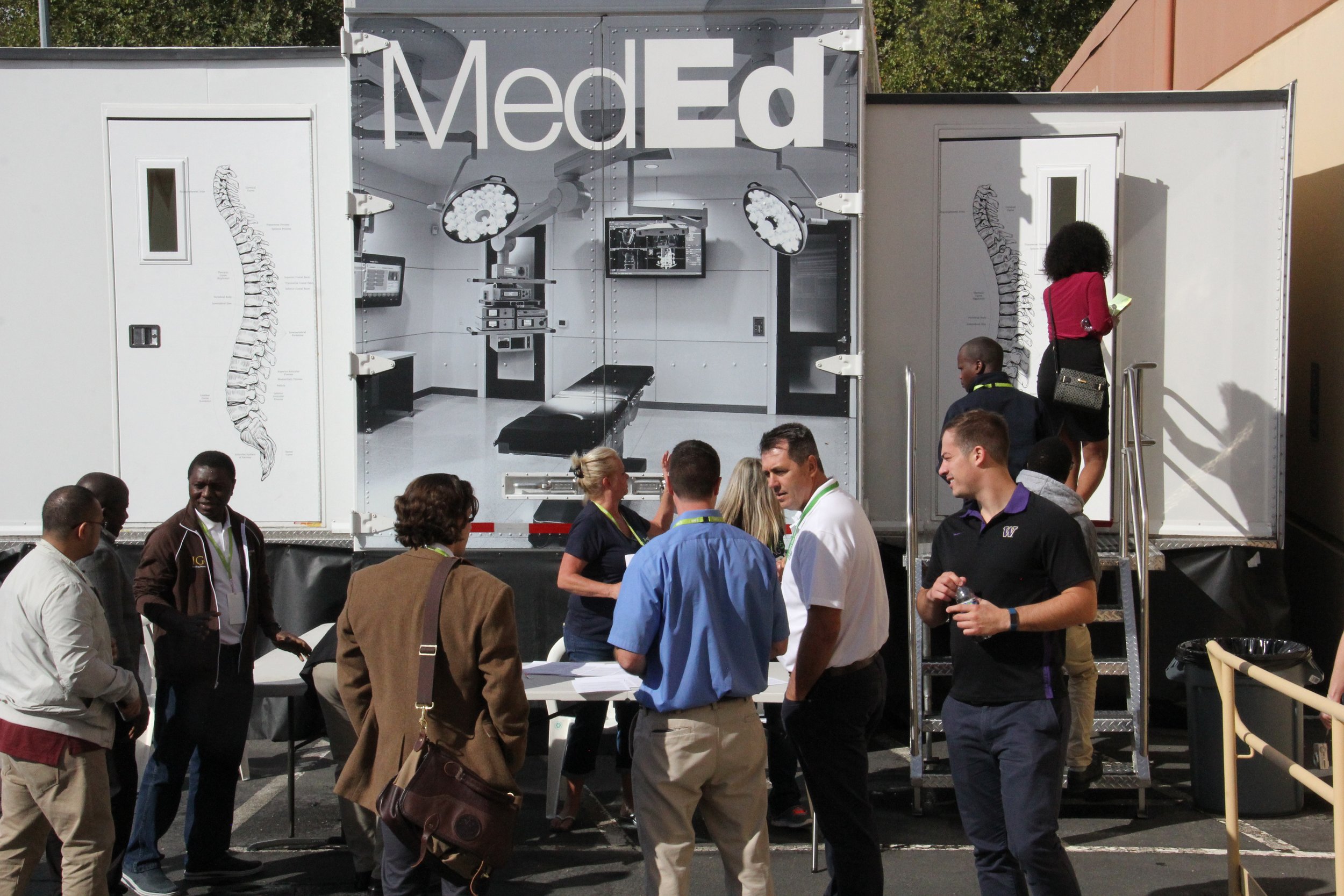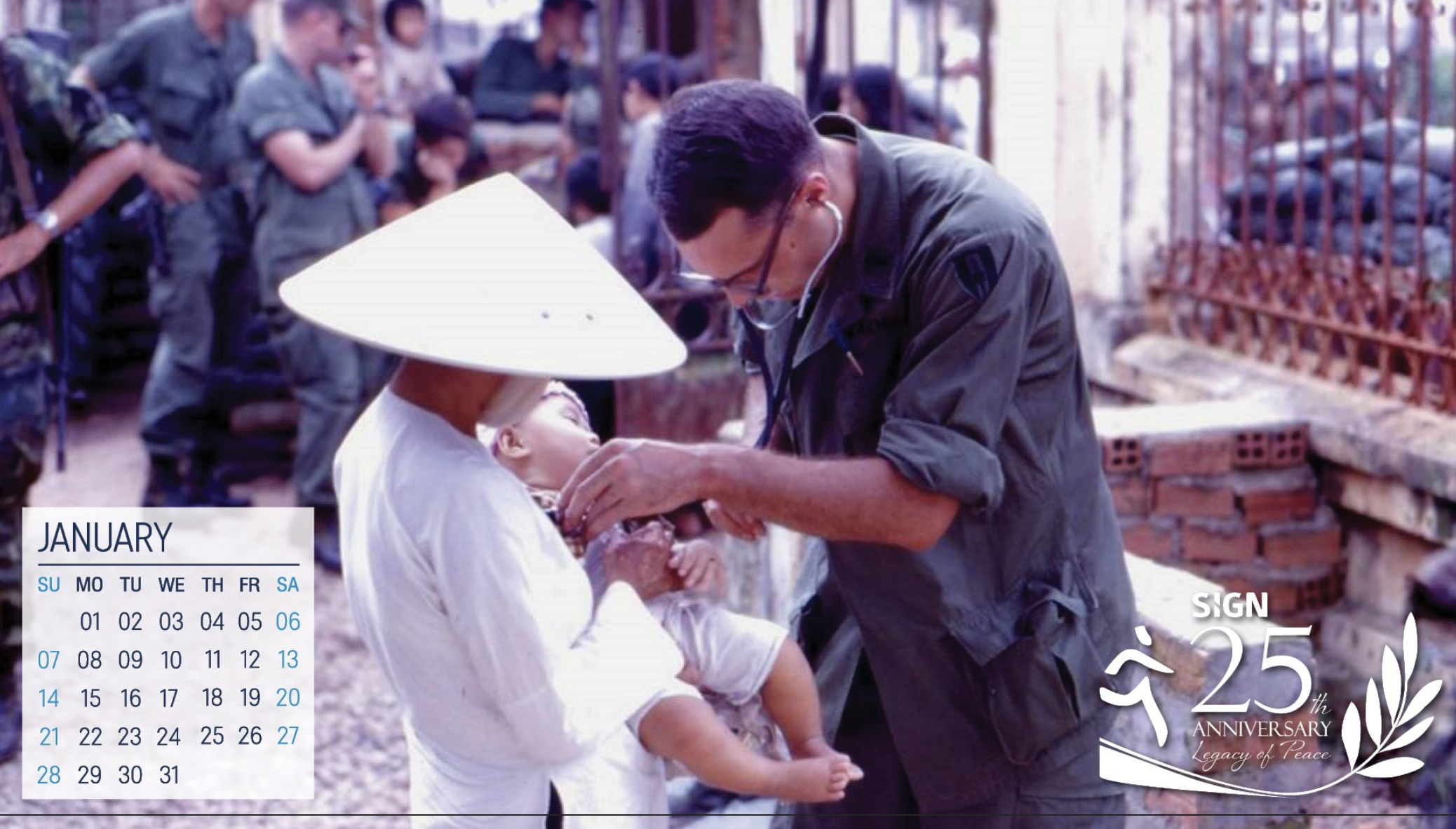A Practical Approach: Cooperative Learning in the Bioskills Lab
By Adam Pilger, SIGN Communications Specialist
For 23 years, SIGN has hosted the SIGN International Orthopaedic Conference. From its inception, the SIGN Conference wove together classroom learning and hands-on training. Surgeons from around the world come to share their experiences and learn from their colleagues. As the conference has grown and expanded, SIGN has incorporated new methods to help surgeons improve their skills.
An exciting addition arrived at the SIGN Conference in 2017. A mobile Bioskills Lab, from Surgical Training Institute, afforded surgeons an opportunity to practice their surgical skills on human tissue. Many surgeons from low- and middle-income countries never have the chance to practice on anatomical tissue. The lab acts as a stepping-stone between the classroom and the operating room, where surgeons can experiment with new techniques without endangering patients’ lives. Most of the attendees said their time in the Bioskills Lab was the highlight of the conference.
The Mobile Bioskills Lab, a trailer with pop-out sides, at the 2017 SIGN Conference.
The invaluable learning experience provided by the mobile lab prompted a remodel of SIGN HQ. In 2020, SIGN received a grant from the M.J. Murdock Charitable Trust to transform the east wing of the building into the Procedural Learning Center (PLC), which was completed in 2021.
The PLC consists of two elements: a classroom and a Bioskills Lab. The classroom is designed to hold workshops relating to the Bioskills Lab. The lab has 8 operating stations, where surgeons work together to learn a new procedure. Additionally, an audio-visual system was installed, enabling session leaders to demonstrate techniques in real time. An autoclave, donated by Acumed, provides for the sterilization of instruments used during lab sessions.
In 2022, the first in-person SIGN Conference following Covid highlighted the completed PLC. Surgeons were able to participate in six hands-on trainings for hip, pelvic, ankle, and elbow fractures, as well as flap procedures. A spine lab was also included for the first- annual SIGN Spine Day. The small-group sessions enabled SIGN Surgeons to get more practical experience and attention from session leaders.
Uses of the Bioskills Lab extend beyond teaching surgical procedures. SIGN Engineers gain valuable knowledge from their participation in lab sessions. During a session, engineers have an opportunity to ask surgeons questions about the procedure. Engineers can then improve instruments and implants based on insight gained from surgeons.
Access to the lab is also crucial for designing new products. Typically, engineers test implants on simulated foam bones. However, simulated bones have their limitations. Testing designs like the skin graft system requires the use of human tissue. Without the lab, this process would not be possible.
Construction of the PLC was a milestone in SIGN's history. Conference attendees can practice SIGN Surgery on anatomical specimens with guidance from mentors, while engineers observe the process. This cooperative learning prepares surgeons to help their patients and train their colleagues when they arrive home.
We hope you enjoy this journey back through SIGN’s history. As we move through 2024, there will be a historical highlight in each newsletter, bonus email messages, and social media posts. If there is something you are interested in learning more about, please email us at info@signfracturecare.org
In honor of SIGN's 25 years of healing, would you consider making a monthly gift of $25 or more?
Check the "Monthly" box and type in your gift amount on the donation form.
Discover more!
Throughout the year, remember your support of SIGN with background images for your computer or phone.
Discover events that shaped SIGN in a historical timeline.



